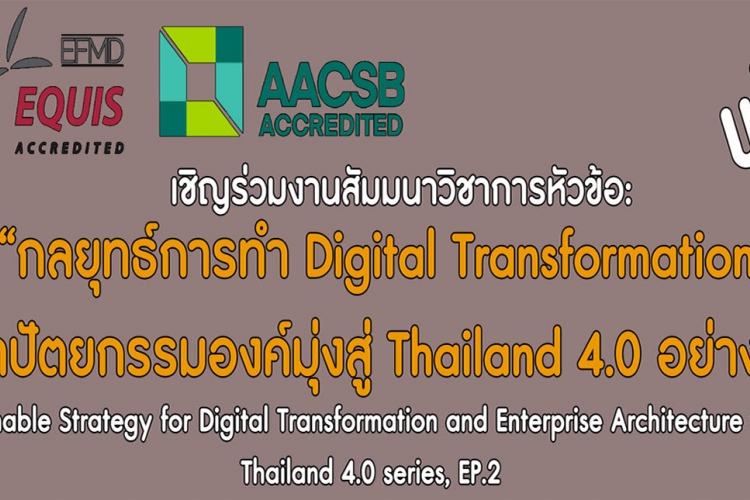A Sustainable Strategy for Digital Transformation and Enterprise Architecture towards Thailand 4.0 series
A Sustainable Strategy for Digital Transformation and Enterprise Architecture towards Thailand 4.0 series will be held on 22 September 2017 from 9.00-16.00 at the Faculty of Commerce and Accountancy, Thammasat University (Tha Prajan campus).










